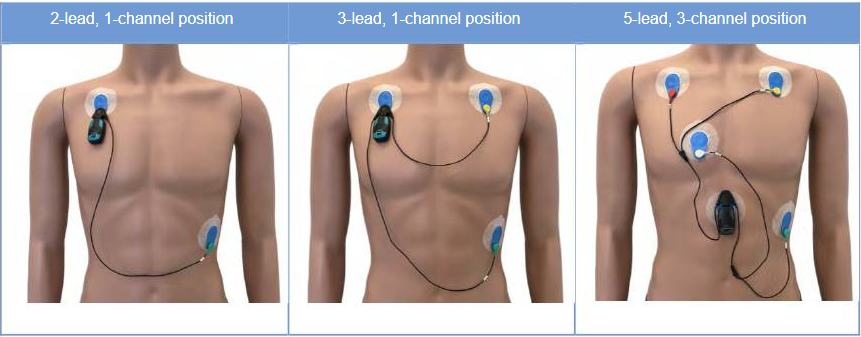The quality of the ECG signal is an important factor affecting the accuracy of analysis and proper interpretation, particularly for long-term ECG monitoring such as with Holter monitors or ECG patch devices. Misinterpretation can lead to a wrong diagnosis and consequently the selection of inappropriate treatment. The purpose of this article is to discuss possible ways of improving the quality of ECG signals in order to obtain more reliable results.
Why does the quality of the ECG signal matter?
Electrocardiography is a diagnostic procedure that measures the electrical activity of the heart. Contractions of the heart muscle are caused by electrical impulses, which, when recorded on a graph, form an electrocardiogram.
Accurate ECG readings are crucial for proper diagnosis of heart diseases and monitoring of patients. Adequate signal quality will therefore allow rapid intervention in case of any health problems and possible abnormalities in monitored patients will be caught.
Factors affecting the quality of the ECG signal
To conduct a Holter test in an appropriate way, it is necessary to pay attention to the main factors that can interfere with the quality of the recorded signal. The most common mistake is placing the electrodes on the body in the wrong way or using poor quality electrodes. Sometimes the poor quality of the ECG can be caused by poor quality recorders. You can find insights on the differences between cable Holter monitors and ECG patch devices in our prior post here. Signal noise can also occur when a patient deals with the recorder in a wrong way and does not follow the cardiologist’s/manufacturer’s instructions (e.g. pulls the wires, detaches the electrodes). Fat or bones between the electrode’s surface and the heart can also interfere with the quality of the recorded pulses. External factors such as a patient’s movements or external sources of magnetic fields (e.g. mobile phone) also impair ECG quality.
Effects of poor ECG signal quality
Poor quality of the recorded signal can have consequences in the form of misinterpretation of false positive/false negative results. Wrong electrode placement or the patient’s muscle movement can lead to the occurrence of artifacts on the ECG graph. False waves can be misinterpreted as real changes in the heart’s electrical activity. Also, real waves can be distorted due to poor signal quality and misinterpreted as pathological. If the signal is too noisy, some significant abnormalities may go undetected. As a result, the test will have to be repeated, increasing costs and delaying (often crucial) diagnosis.


The basis of a well-performed Holter test is the proper placement of electrodes on the patient’s body. Following the electrode placement configuration according to the device manufacturer’s guidelines is necessary. The configuration is specific for each device. See below an example.

For the most accurate test results, use appropriate equipment: high-quality ECG recorders and specialized ECG analysis software, such as Cardiomatics.
New technologies
Today, there are modern technologies available, which can improve the quality of ECG signals.
Adaptive digital filters are used to reduce noise and interference in ECG signals. These algorithms are capable of dynamical adaptation to changing conditions, which allows the effective elimination of various types of interference (e.g. 50/60Hz waves from the electrical grid, artifacts).
Multi-scale analysis methods allow analysis of the ECG signal on multiple time scales. This makes it possible to detect the slightest changes in the recorded signal and, as a result, get rid of unwanted noise and artifacts.
Artificial intelligence (AI) technologies, such as machine learning and deep neural networks, are increasingly being used to analyze ECG signals. Specialized, advanced artificial intelligence algorithms are able to automatically identify and eliminate artifacts, leading to more reliable results.
Cardiomatics’ AI-powered ECG analysis solution uses these state of the art techniques including signal normalization, signal filtering and deep neural network based detection and classification of QRS complexes, non-diagnostic parts of the signal, as well as identification of heart rhythms. This allows it to produce high quality results across a range of +40 compatible ECG device models.
Summary
It is easy to see how important a good ECG signal quality is for the correct interpretation of Holter test results. Always keep in mind a few tips to get the best quality possible:
- Accurate placement of electrodes and proper skin preparation,
- Instructing the patient on how to deal with the device,
- Using high quality recorders and proper device care,
- Use advanced ECG analysis solutions powered by modern machine learning techniques such as Cardiomatics.

